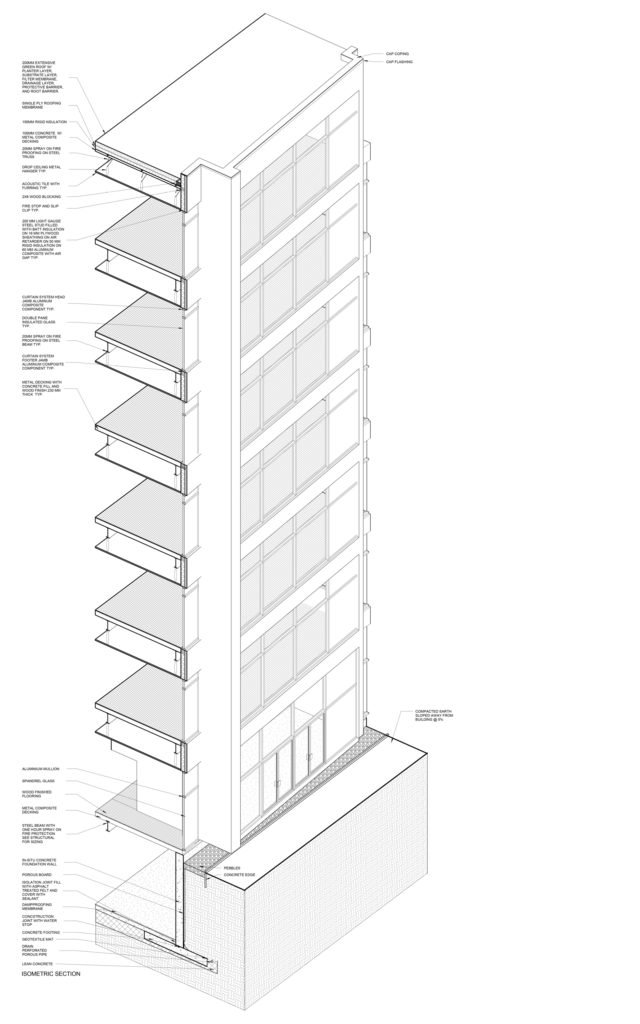No drawing can capture reality entirely. A drawing represents a particular perception of human experience. This rule applies to drawings in architectural communication as well. The question is when and how to justify the right type of drawing to accomplish the task at hand. This requires an understanding and evaluation of the function and the utilization of an appropriate drawing type in order to be successful. This article will compare the function between axonometric and perspective drawings and their usages in architectural design process.

Axonometric:
In the Middle-Ages, axonometric drawing was used mainly for military purposes. Due to its measurability and preciseness, it was the optimal medium of communication for building walls and other constructing facilities to protect their cities. Since errors meant the loss of life and their cities, precision was critical. Axonometric drawing is parallel projection drawing that offers a unique view beyond our actual perception. Axonometric drawing, for Akos Moravanszky, has been considered an efficient method of visualizing spatial relation to true size. It is safe to say that we hardly see this type of view through the naked eye on a daily basis. In architectural practice, I normally utilize an axonometric drawing (an Isometric) to visualize constructional methods in design that relate in order to reveal the sequence of construction or material components. It is an effective type of drawing that I often encourage students to use for exploring their constructional understanding in architectural design. According to Akos Moravanszky, axonometric projection was considered an objective means of technical drawing. Akos cited that Auguste Choisy was be able to mediate structural clarity of major spatial construction in his studies. Due to the effectiveness of axonometric drawings, there have been many respected architects from historical eras to contemporary times that have utilized this type of drawing as an important vehicle in their design process. The drawing above is an example of an axonometric drawing by students in my steel building technology course. It was utilized to capture the constructional sequence and building components as part of their design exploration in addition to the conventional method of drawing (detail section drawing).
Perspective:

Unlike an axonometric drawing, a perspective drawing is often used to capture a particular angle of our perception as a being in space. It is a useful type of drawing in design purposes to visualize and capture our perception in architectural spaces. Its function is similar to the photographing method. It is used to represent our imagination. Well-known architect, Steven Holl, often uses perspective drawings along with other types of drawings to capture his architectural imagination in his water color sketches before the ideas are further examined. Perspective drawings are also widely used by architects to present their design ideas to clients since viewing this type of drawing requires little background knowledge to understand its content as well as its closeness to our actual perception when we conceive idea of spaces in three dimensions in contrast to axonometric drawings. In the Renaissance era, perspective drawing was widely used as the dominate medium due to its character. The example above depicts the ability of a perspective drawing to capture our perception in viewing a space in three dimensions.
When practicing architecture, it is critical to be able to evaluate which type of drawings shall be used as a vehicle of design in order to explore the best possibility of design. Axonometric drawings seem to be an appropriate medium to explore and explain constructional methods in design while perspective drawings are good for three dimensional explorations in design as part of our human perception in architectural spaces. However, there is no distinct line of usage between the two. It is based on the experience and purpose of how and when to use them. The base line is understanding their capacities and functions which help to justify what type of drawing should be used to serve our purpose.